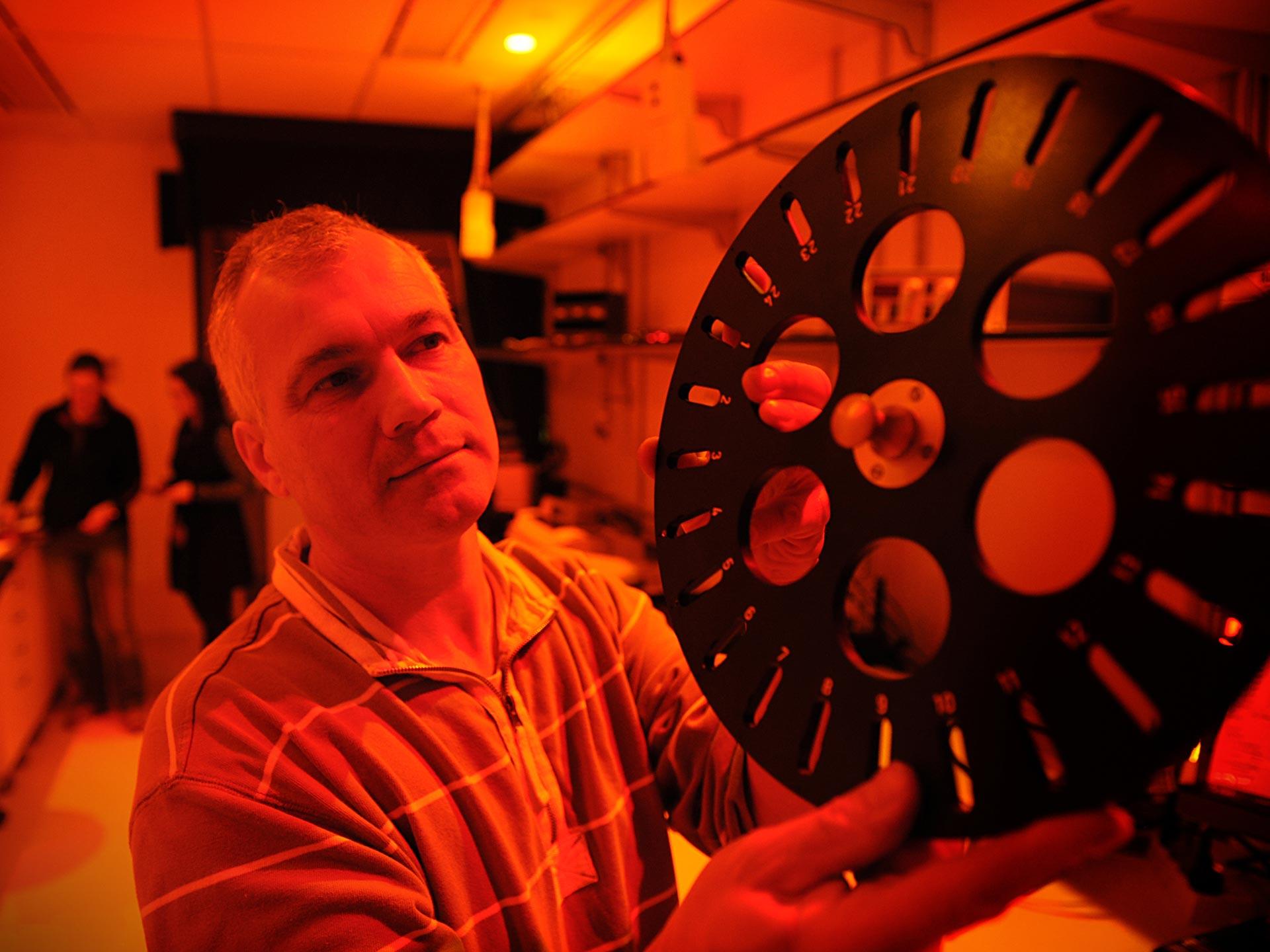Scientists on a mission from moon to mars
University of Adelaide research that could help materials be found in space more easily, enable satellites to swarm together and extend the reach of telecommunications is being kick-started by new funding.
The projects, headed by scientists at the University of Adelaide, will contribute to investigating the feasibility of deep space exploration to destinations such as Mars.
Professor Nigel Spooner from the School of Physical Sciences and Professor Derek Abbott from the School of Electrical and Electronic Engineering have received Moon to Mars Demonstrator Feasibility Grants from the Australian Space Agency.

Professor Nigel Spooner from the School of Physical Sciences
Professor Spooner’s project aims to discover and characterise “Novel Fluorescence” (NF) emissions that will enable real-time, non-contact identification of specific materials.
“We are simulating an off-Earth environment in our lab – airless and low-temperature – in which we will test how NF technology can be used to find and characterise specific materials which are of importance for space resource and manufacturing,” said Professor Spooner, who is from the Faculty of Sciences and a member of the Department of Physics and Institute of Photonics and Advanced Sensing.
“The data that we will collect from this first stage will be used to form a plan on how to test and use this breakthrough NF materials-sensing technology in a future research program which will develop a sensor that, ideally, will be tested on the International Space Station.”
Long-term deep space exploration, which include NASA’s plans to send future generations of astronauts from the Moon to Mars, depends on finding, and using sustainably, resources that will be required to live in off-Earth environments.
Professor Spooner’s project has received $198,404 in funding over 12 months.
“These projects, funded by the Australian Space Agency, enable our scientists to be part of NASA’s inspirational endeavour to go forward to the Moon and on to Mars.”Professor Anton Middelberg, Deputy Vice-Chancellor (Research), University of Adelaide
Professor Abbott, who is from the Faculty of Engineering, Computer and Mathematical Sciences, has received two grants: $199,506 to help CubeSats to fly in formation and $199,765 to investigate the next generation of antenna design.
“We will investigate the advantageous capabilities of optical communication links for flying a swarm of two CubeSats in formation,” said Professor Abbott.
“This will demonstrate that full sky coverage by CubeSats is possible, that data can be transmitted between satellites at a sufficient rate to enable this to happen, and that the satellites can maintain multiple links simultaneously.”
NASA’s Deep Space Network (DSN) maintains communication with interplanetary spacecraft missions: three giant radio antennas spaced equidistant from each other around the world including one located in Canberra.
“The project will aim to investigate the feasibility of ground-based next generation phased array antennas for the Deep Space Network,” said Professor Abbott.
Phased array antennas have the unique ability to change the shape and direction of the radiation pattern from an antenna without physically moving it.
Professor Anton Middelberg is the Deputy Vice-Chancellor (Research) at the University of Adelaide.
“The University of Adelaide continues to be at the forefront of world-class space research,” he said.
“These projects, funded by the Australian Space Agency, enable our scientists to be part of NASA’s inspirational endeavour to go forward to the Moon and on to Mars.”
